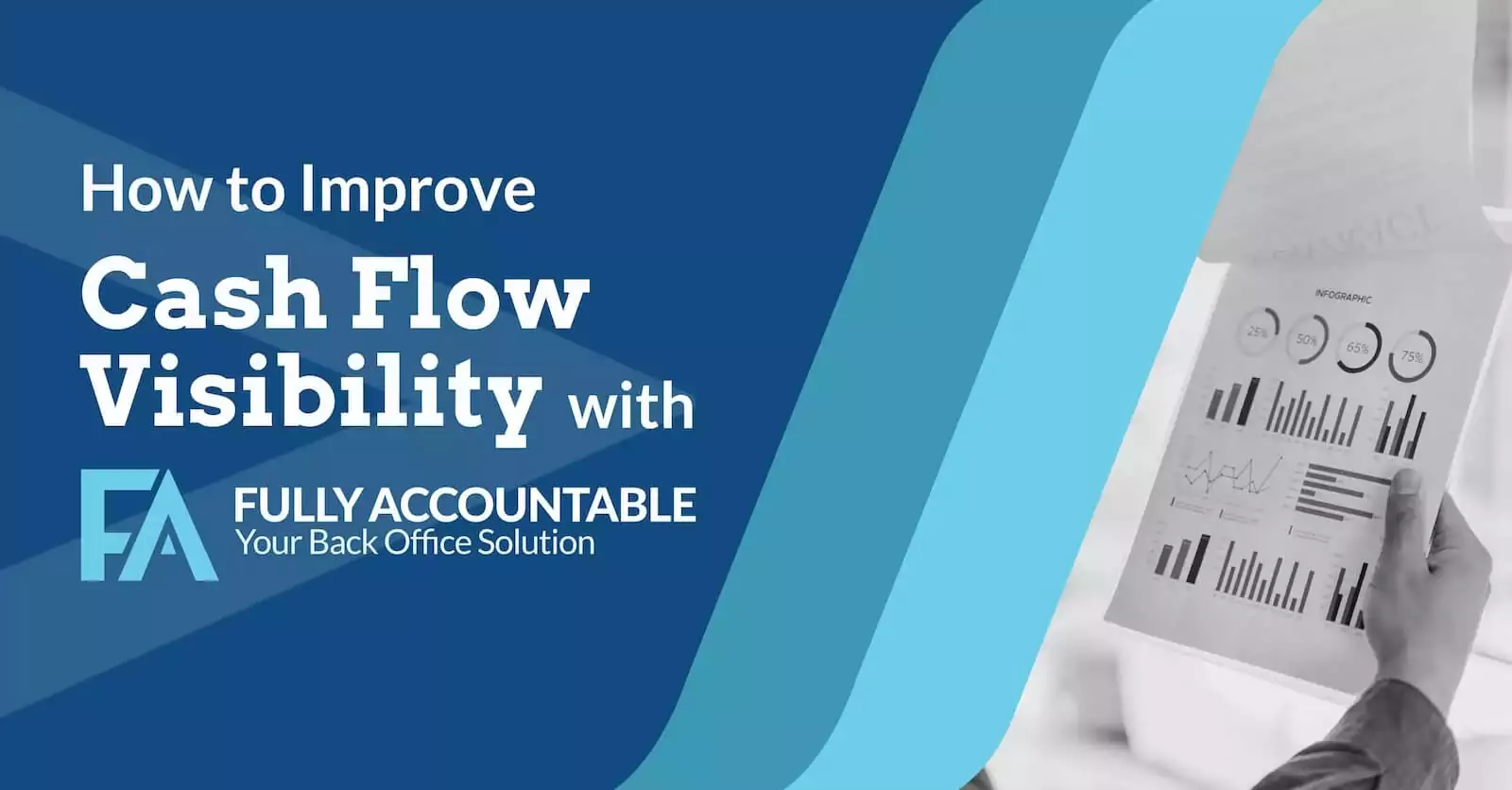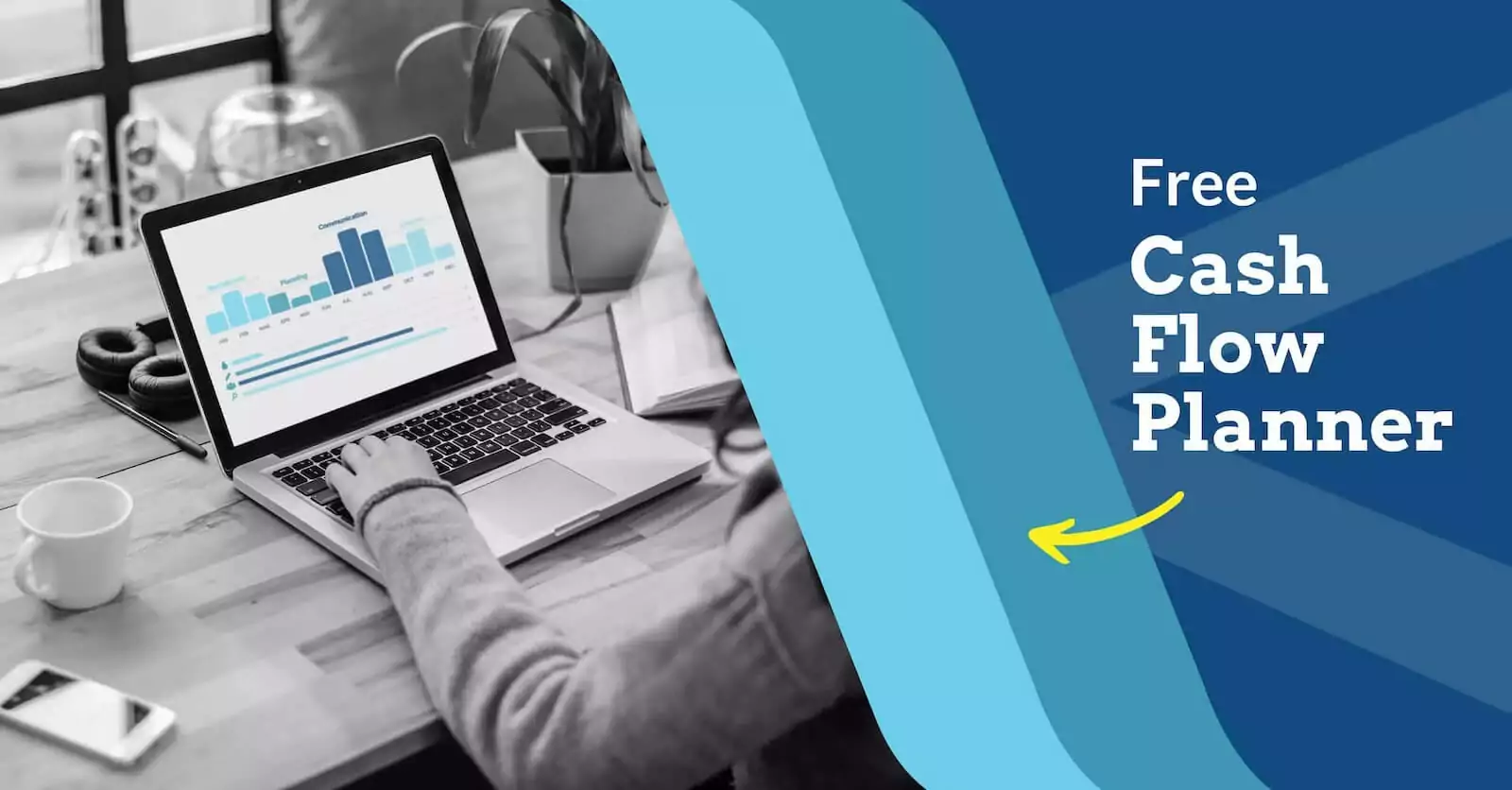
E-commerce Cash Flow Projection Template
Plan for growth and resiliency with a strong cash flow strategy!
Expert-Approved: Created by financial experts to help you make smarter business decisions.
Ready to master your cash flow? Unlock the power of a 13-week forecast with our FREE, easy-to-edit spreadsheet!
It’s not worth losing sleep because you don’t understand your numbers. A cash flow projection model isn’t a fancy, nice-to-have report; it’s an invaluable tool for predicting shortfalls and reducing financial stress. As an e-commerce and digital business owner, visibility of your cash flow is critical for financial success. When you master cash flow management, you can ride out inventory and seasonal sale fluctuations, hit payroll, and plan for growth with a sense of security.
At Fully Accountable, our financial experts have worked with thousands of e-commerce founders. We speak digital and understand the financial ebbs and flows unique to digital business owners. This 13-week model is one of many financial models that our financial analyst employs to monitor and plan for cash management week in and week out, down to the dollar.
Gain certainty by anticipating your risk so you can feel secure during the deficit and surplus months. This starts with a cash flow statement.
Get started by downloading the template now, or learn more about cash flow management by reading the article!
What is a Cash Flow Statement?
Ask An Expert: Cash Flow 101
13-Week Timeframe
How to Use the Template
What Is a Cash Flow Statement?
In simple terms, a cash flow statement is a snapshot of the money you have readily available in your accounts.
Cash flow management is the process of tracking, analyzing, and understanding the money that moves in and out of your business during a period of time. You have a positive cash flow when more money flows in your account than out, and a negative cash flow if you have more flowing out than inflows.
As a digital business owner, a cash flow statement informs you of the amount of cash that you can expect to have available for use at the beginning of each week. This is key for visibility when planning for growth and reducing business stress.
For this template, we’ll focus on a rolling cash flow statement that considers current cash and projects the money flowing out and the money flowing in each week.
Ask An Expert: Cash Flow 101

Why should digital companies care about a cash flow strategy?
Digital companies should care about a cash flow strategy because it allows them to plan for growth and predict cash for the future. The planned cash can be used for investments, launching new initiatives, and other opportunities that will expand the business.
How can an effective cash flow management strategy impact a company?
A cash flow strategy can impact a company by providing a roadmap on cash balances at any one time. A profit and loss statement does not contemplate debt or outstanding payables, prepayments, and other balance sheet line items that are not recognized. The cash flow lets you see your company’s true cash balance when considering all current and future revenues and expenses.

Is a cash flow statement the same thing as my budget?
No, the cash flow statement is not the same thing as your budget. A budget is the expected expenditures associated with a specific project or revenue stream and the related expenses for a specific time frame. The cash flow statement is a report that looks at the cash in and out daily and weekly.
How does a cash flow statement differ from a balance sheet and P&L report?
A cash flow statement integrates the balance sheet with the P&L. It is the statement that connects these two statements.
Incorporating the balance sheet, P&L, and cash flow statements together gives you a full financial picture of the business. If you take one without utilizing the others, you see a partial view of the business.
How to Use This Template:
Now that you understand how a cash flow statement can inform financial decisions and planning for your business, let’s use the tool!
Timeframe for Forecasting
This template’s default cycle is 13 weeks. It’s intentionally designed to be rolling because it’s difficult to accurately predict sales beyond that window.
Cash flow forecasting is not an exact science, with many variables that are hard to account for. For example, if you forecasted for six months in advance, your company’s Facebook or Google ads could be pulled, affiliate partners may alter, and unknown variables in the marketplace could significantly alter your projections. On the other hand, a short six-week window is not enough time for an accurate cash flow forecast. With a 13-week rolling cash flow template, the idea is that every week, you’re adding a week, so you’re always looking at the same window.
Don’t confuse a cash flow projection with your budget.
Now that you’re ready to enter your numbers, you can refer to the category definitions to clarify what you’re measuring and why.
Sales Deposits: When Fully Accountable works with a client, this is typically projected by applying historical data from the client’s accounting software. This category is where you would apply any plans for estimated growth. For example, if you plan to grow by 10 percent, you’ll want to include projections and goals from your sales plan. When you work with Fully Accountable, we track your weekly goals and performance. If you’re not hitting that weekly goal, then the template should be adjusted in the next 12 weeks so you have an accurate assessment of sales deposits.
Sales of Product Income: Additional income outside the majority is recorded here.
Net Deposit: This is the total from Sales Deposits and Sales of Product Income.
Owner Draw: This depends on what the business owner is paying themselves. If you’re an owner and not on salary and taking a specific draw out of the business each month, this is where you would apply that number. It’s a number that can be adjusted based on the current income and cash flow to avoid an owner from robbing themselves or the business.
Payables for Inventory: This category is where you should project out the timing and terms of invoices, including those for credit cards (net 30 vs net 60), which are related to payables for inventory. Every company should have an open-to-buy, an essential document that forecasts purchases based on inventory needs from historical data.
Payroll: This should include insurance and 401K expenses. If you’re using a provider for these items or if they’re separate, you need to know the total and frequency of the pay period.
Consultants: Consultants include 1099 contractors or anyone you hire outside of payroll.
Credit card payments: This is where you would apply historical data based on your existing budget. At Fully Accountable, we use a KDR Expense Analysis with our clients, which analyzes our clients’ expenses. We use this to inform them what they should Keep, Delete, or Reduce to manage these expenses.
Commissions: This does not apply to every business. However, it should apply here if you have affiliates, commission-based employees, or contractors.
Rent: Apply your historical data here.
Estimated Tax Payment: This is often overlooked. Tax payments should be calculated quarterly based on the P&L. If you have an established business, then this may already be managed by the IRS. Business owners should be aware of changes. Let’s say the IRS has your tax payment calculated at ten thousand dollars per quarter, but you start increasing in income. If you don’t calculate yourself and what you’ll owe at the end of the year, you may have paid out of $40,000, but find out that you owe $80,000. Business owners should be aware of these increases so they’re not left scrambling for additional money.
22, 23, 24: You can extend the model to anything specific to your business.
Cash out: This is the total cash out for the week.
Net Cash: This is your net cash for the week. It’s calculated by applying the difference between the Net Deposits from line 7 and the Cash Out from line 25. This number is then added back to your bank balance from the previous week.
Next, remove and add a week!

About the Template Creator
As a business owner, you understand and appreciate numbers, but there may be better uses of your time than the back-end work. That’s where Fully Accountable steps in!
We’ll work with you to create financial and cash flow projections that will allow you to determine your current cash flow and what is expected in the future. This type of information gives you insight into when it may be time to:
Hire Additional Employees
KPI and Benchmark Reporting Objective Metrics
Purchase Additional Inventory
Invest in New Initiatives for Your Business
Whether you’re running an e-commerce business or a marketing agency, you should have confidence knowing that your company’s financials are on track to hit your business’ growth and performance goals.
Reduce stress and let our expert fractional CFOs provide you peace of mind with careful planning, analysis, and reporting. Cash flow projections enable your business to manage all your cash outflow to ensure your business’s long-term stability.
Your CFO will take these projections and make sure that cash is available for payroll, operating costs, and more.
Plan for growth and resiliency with a strong cash flow strategy – Get Access Below
Fully Accountable Is Your
E-Commerce Accounting Partner
Fully Accountable is a top-rated outsourced accounting and Inc. 5000 honoree, a list that tracks the top 5,000 privately held companies in the country.
We offer outsourced accounting services for e-commerce, as well as outsourced CFOs and controllers, who can provide you with high-level financial reporting and business strategies.
If you’re ready to rein in your finances through accurate accounting that will relieve that pressure, contact us or book a Discovery call at (877) 330-9401.
